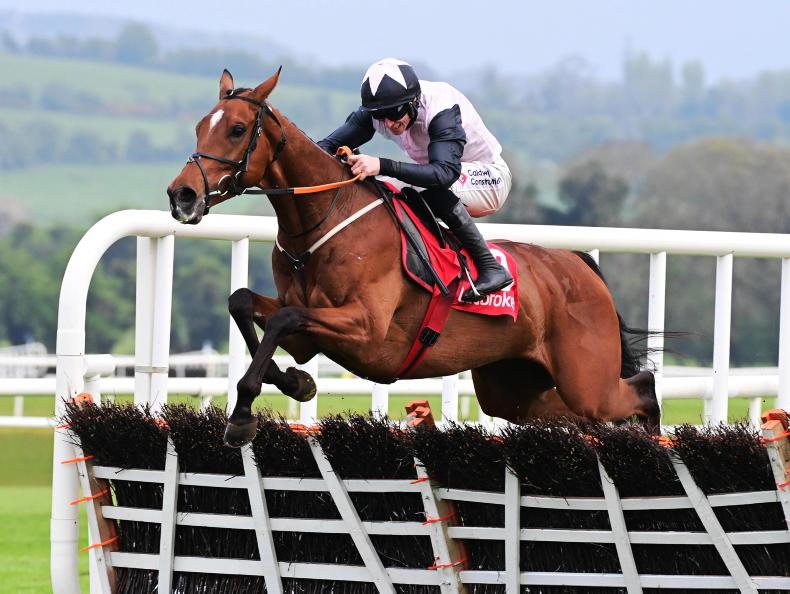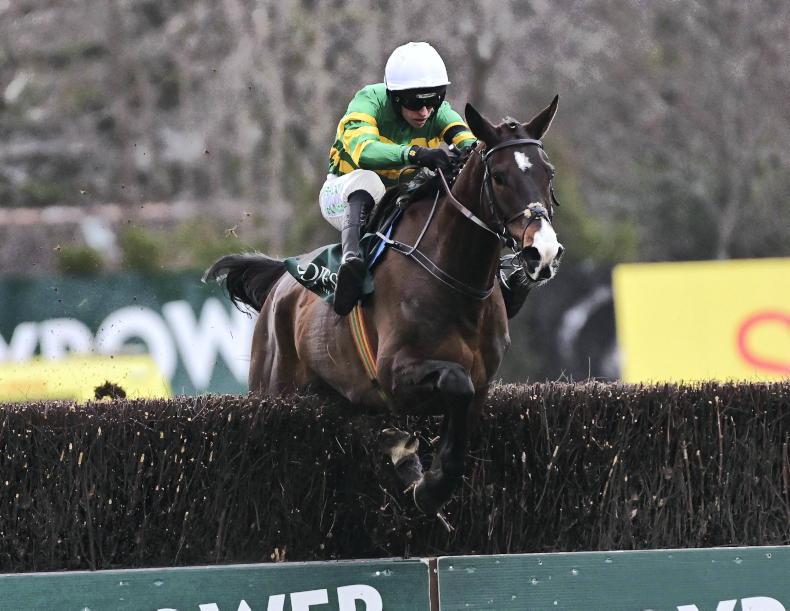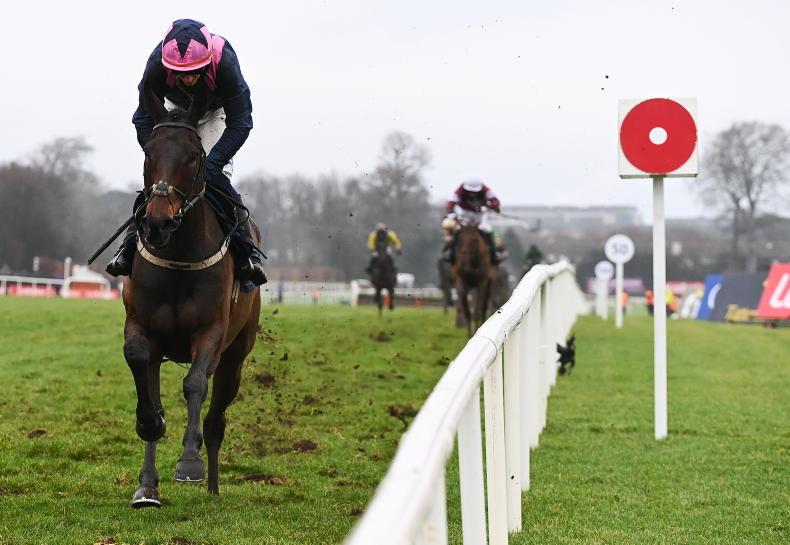Memories are made of this
JUMP racing started in Ireland, the first recorded race being held over four and a half miles between Buttevant and Doneraile in Co Cork in 1752.
Church steeples marked the beginning and end of the race, hence the term ‘steeplechase’.
The sport quickly spread to other counties in Ireland and to Britain, where the first official running of the Grand National was won by the Irish horse Lottery in 1839; whilst the most prestigious weight-for-ages, the Cheltenham Gold Cup and the Champion Hurdle, began in 1924 and 1927 respectively.
Apologies if you knew all that already.
As jump racing grew so did the rivalry between Britain and Ireland. For around 40 years it took the form of British-trained horses winning most of the important races (once Vincent O’Brien turned to flat racing and Tom Dreaper retired) and Ireland breeding most of the winners of these races. However, any rivalry is a friendly one.
The major meetings at Aintree, Cheltenham, Fairyhouse and Punchestown attract fans from both nations. Crowded bars are filled with people speculating about which horses will win, some old favourites and others new hopefuls.
The atmosphere, even at lesser meetings, is filled with anticipation, opinion, excitement, occasional delight and more frequent disappointment. The buzz can be addictive; and, when we look back, we think mainly of the good times.
For me, the closing stages of the 2017 Cheltenham Gold Cup provided probably the best few moments of my life. (I only dare confess that because my lovely wife was with me.)
Betting is a facet, so is following jockeys and trainers; but these are not the most important aspects for most people who love the sport, whether they are television viewers, racegoers, owners or breeders. The most important is the horse.
Lovers of jump racing can reminisce about great horses of the past, arguing about whether Arkle was better than Flyingbolt (Ted Walsh is completely wrong about that one); recalling the unparalleled feats of L’Escargot, Red Rum and Dawn Run; looking back at the remarkable careers of Desert Orchid, Istabraq and Kauto Star.
That’s without even mentioning horses that might be personal favourites, like Annie Power, Best Mate, Big Buck’s, Constitution Hill, Danoli, Denman, Douvan, Faugheen, Galopin Des Champs, Honeysuckle, Hurricane Fly, Limestone Lad, Master Minded, Persian War, Sizing John or Sprinter Sacre.
Love of the sport and appreciation of great horses, skilful trainers and outstanding jockeys drives an Anglo-Irish passion for jump racing that far exceeds that found anywhere else in the world.
This includes our greatest rival, la belle France, where prize money is excellent, very good horses are bred, and the pleasures of eating good food and drinking fine wine by the side of the paddock at Auteuil are unspoilt by having to encounter actual spectators (which is fine for someone as anti-social as me but not for creating much atmosphere).
Jump racing was born in Britain and Ireland, and many of its most devoted followers live in these nations. We that love the sport should try to ensure that we hand it over to the next generation in at least as good a condition as it was when passed onto us.
‘Houston, we have a problem’
Well, not Houston exactly, but Anglo-Irish jump racing and breeding certainly has.
Just look at any list of top horses at present and those born in France are likely to dominate. If anything, this domination may be increasing.
Five of the past six Cheltenham Gold Cup winners were French-breds, along with five of the last eight Champion Hurdler winners and all of the past 11 Ryanair Chase winners.
In Ireland, the last five Punchestown Gold Cup winners and five of the six most recent Irish Gold Cup winners were also French-bred. Admittedly, only three of the past five Queen Mother Champion Chase winners and just the last two of the Stayers’ Hurdle were French products – giving at least a touch of reassurance to those still in denial.
Of the top 10 jump racing horses by Racing Post Ratings (RPRs) in 2023/’24 eight were French-bred, with one German (Gaelic Warrior) and one Irish (Shishkin). In 2022/’23 seven of the top 10 were French-bred; and this season it is currently seven again, all being rated 170+ with Banbridge the only Irish-bred 170+ performer. All of these French-bred horses came from crops of between 35% and 40% of the total production of the three major jump-breeding nations, with some of the best French horses retained at home. So, we do indeed seem to have a problem!
Are The French better at breeding jumpers?
Of course, all of this will come as no surprise to followers of National Hunt racing; for it seems to have produced a belief in French breeding supremacy that causes sales buyers to seek out French-bred horses, almost as if the ‘FR’ suffix is a guarantee of racing class. However, looking at the pedigrees of French-bred winners of major jump races, it is difficult to see any material superiority in the way they are bred.

Stayers' Hurdle winner Teahupoo made his racecourse debut in a three-year-old hurdle at Auteuil \ Healy Racing
For example, if we look at all Cheltenham Festival Grade 1 winners (excluding the Bumper) in the past 10 seasons, we find that:
These results are similar to those I found in other studies, confirming that:
Basically, whilst there are differences in the approaches of French breeders to the selection of mares and stallions, and the greater emphasis on using stallions proven over jumps seems rational, the generally inferior racing class of the other stallions employed suggests that, unless hundreds of breeders all over France are far more skilled than their equivalents in Ireland and Britain, superior breeding is not the prime reason for the relative success of French-breds.
Several months ago, I gave some statistics in this journal that indicated what might well be. These showed the ages at which horses that achieved Racing Post Ratings of 170+ and 160-169 during the 2022/’23 and 2023/’24 seasons.
So, 91% of all 160-169 French-bred horses had raced over obstacles by the end of their four-year-old year, compared with 56% of Irish-bred horses and 36% of British-breds. For 170+ horses the figures for horses raced earlier are even better, with 94% of French-breds, 83% of Irish-breds and 50% of British-breds first racing over jumps as three-year-olds and four-year-olds.

The most significant difference between the French-bred and British/Irish-bred populations was that the former were far more likely to have begun racing over obstacles at an earlier age, typically over 12 months sooner than Irish and British-breds. In addition, the results for British/Irish-bred 170+ vs 160-169 horses suggest that, even here, horses that race over jumps as four-year-olds produce considerably better results than those making their jumping debuts later.
When I wrote about this several months ago, I gave two pieces of information that support the premise that French-bred horses raised in the same way will have similar results to those bred in Britain and Ireland. These were that:
All the evidence I have looked at, and the above is just part of it, suggests the same conclusion: Nurture not nature is the source of FR-bred superiority.

Outstanding novice hurdler Kopek Des Bordes is by a French Group 3 winner
Why not copy what works in France?
So, if nurture is the problem, surely the solution is to change the nurture?
I find it difficult to believe that French rearing methods and facilities are superior to those in Britain and Ireland, for there is no similar French-bred superiority when it comes to flat racing. What works is educating horses to jump obstacles earlier and aiming to get them racing as three-year-olds or early four-year-olds.
In Ireland the maiden point programme has had a major impact, with most top-class Irish-bred jumpers now coming via this route. Surely then, it would be logical to introduce maiden points for three-year-olds from October onwards, probably over two and a quarter miles. These might offer the same advantages as French-raised horses enjoy at Auteuil or Compiegne: education over proper mid-sized obstacles with 10-12 in each race.
In addition, the introduction of Academy Hurdles gives Irish trainers another option, that of educating young horses over the obstacles they will initially face under rules. There is also the possibility of gradually bringing these races forward in the year, to copy the French model more closely.
If they were formally regarded as having the same status as point-to-points, then the controversy regarding winners remaining eligible to race in bumpers or all-aged maiden hurdles would disappear.
The same applies to NH Junior Hurdles in Britain (though ‘Academy Hurdles’ is a better name). Here, the ludicrous approach of requiring winners to carry penalties in novice hurdles needs to be consigned to the waste-bin. If these horses have an advantage against rivals coming via the Bumper route, then this is surely the point of such races - to help develop better jumpers!
Earlier testing of jumps horses would also give breeders in Ireland and Britain an opportunity long available to French breeders, that of identifying promising sires and broodmares much earlier in their breeding careers. What would have been the initial chances of the chesnut Group 3 winner No Risk At All succeeding in Ireland?
My final ‘Do as the French do’ suggestion is that NH studs and breeders in Britain and Ireland should be more open to using stallions proven as jumps winners.
In the statistics I gave earlier, I failed to mention that the 5% of Anglo-Irish Cheltenham winners sired by horses that proved best over jumps consisted of Constitution Hill, Native River and Sizing John – so it can’t be an entirely bad idea!
Part 2 of this article will be published next week